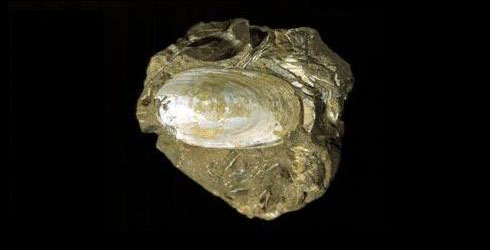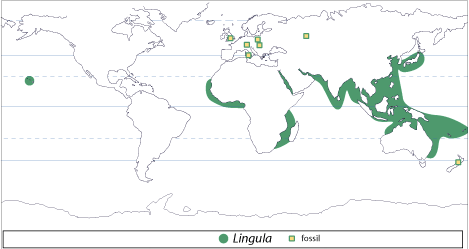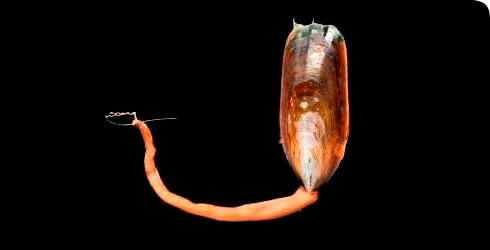Lingula anatina
Lingula anatina and other Lingulid brachiopods represent a group of organisms that have a fossil record stretching back over 500 million years to the earliest parts of the Palaeozoic.
Species detail
Lingula anatina is often cited as an example of a living fossil; an organism that has hardly changed over geological time. However, this may no longer be the case as new evidence comes to light from palaeotological studies.
The organophosphatic shell of Lingula anatina is the primitive condition for the Brachiopoda and as such represents one of the first innovations in biomineralization by any animal. The shell itself has a high organic component along with the inorganic phosphatic component.
-

Taxonomy
Learn about the taxonomy of Lingula anatina, including why it is regarded as the most primitive of the brachiopods.
-

Habitat and distribution
Discover the types of environment that Lingula anatina lives in and the areas around the world that it can be found.
-

Biology
The organophosphatic shell of Lingula represents one of the first innovations in biomineralization by any animal. Find out more about the biology of Lingula anatina.
-
Behaviour
Learn more about the behaviour of L.anatina how it feeds and creates burrows to survive.
-

References
Find references regarding Lingula anatina.
Images

Lingula is often cited as an example of a living fossil, an organism that has hardly changed over geological time.

Linguliformean brachiopods represent the first certain appearance of brachiopods in the fossil record.

The Lingula anatina shell has a high organic component along with the inorganic phosphatic component.

World map showing the distribution of Lingula anatina.
Author
Lee Davies
Recent Brachiopods research project
Palaeontology Department
